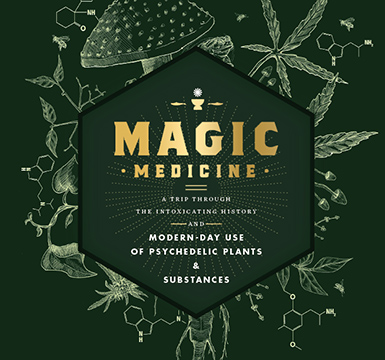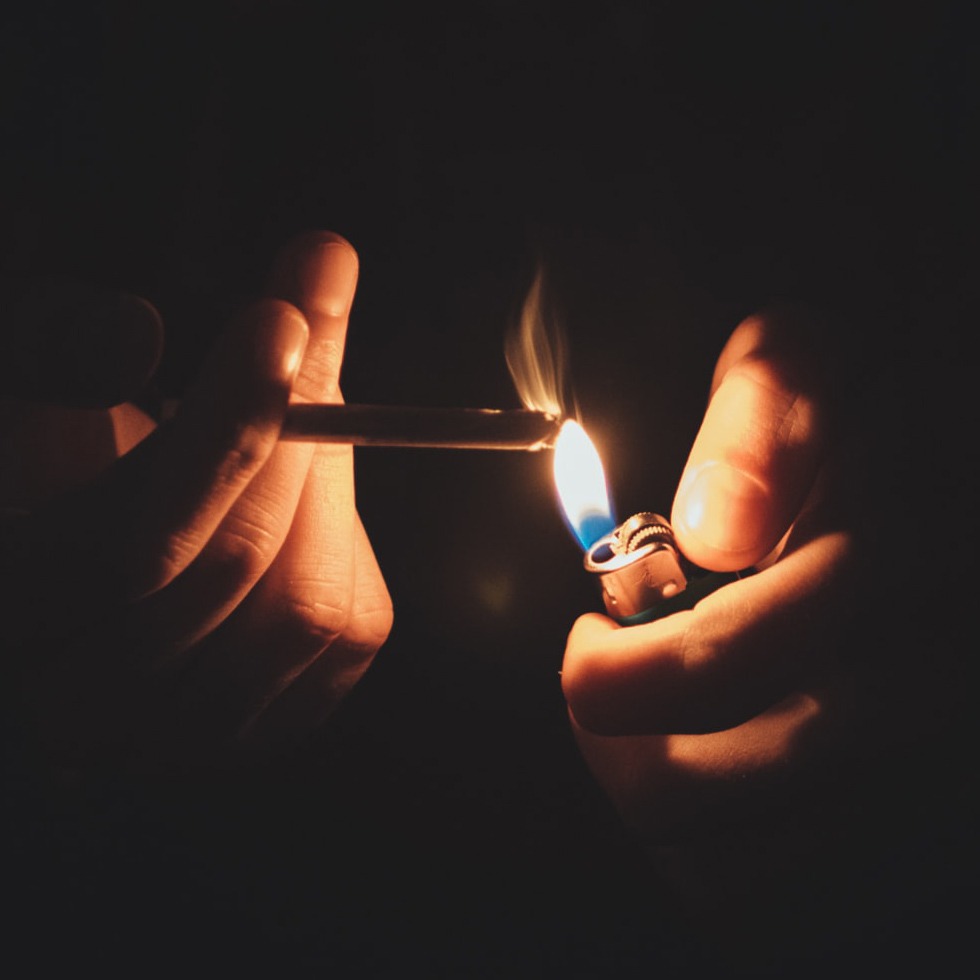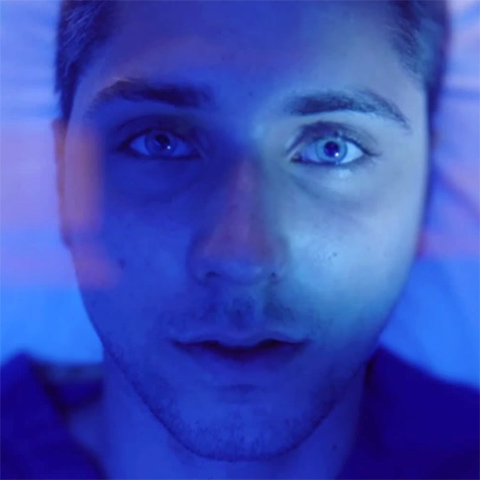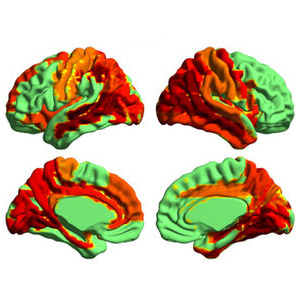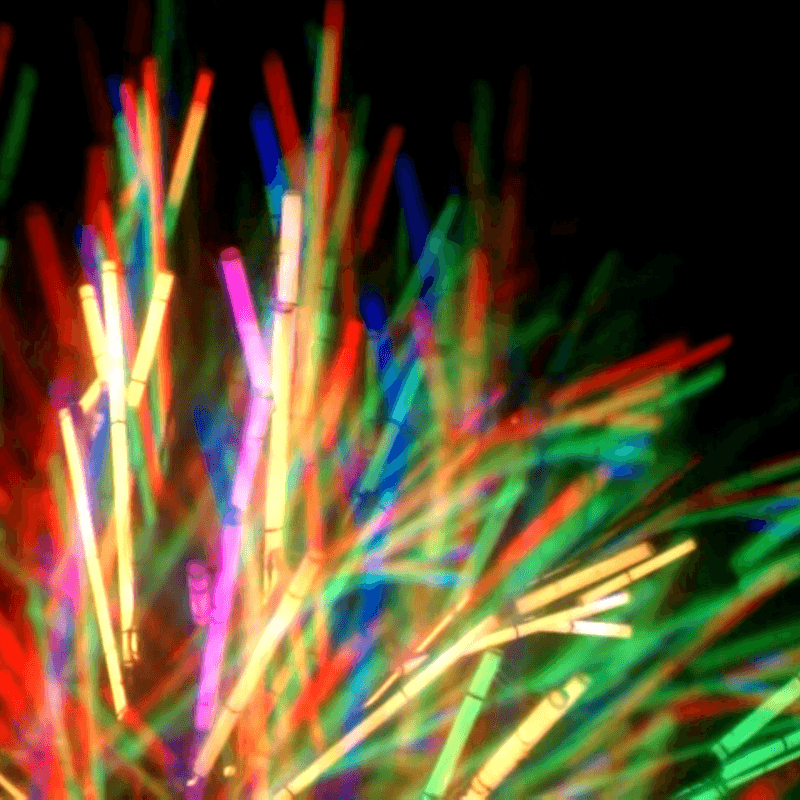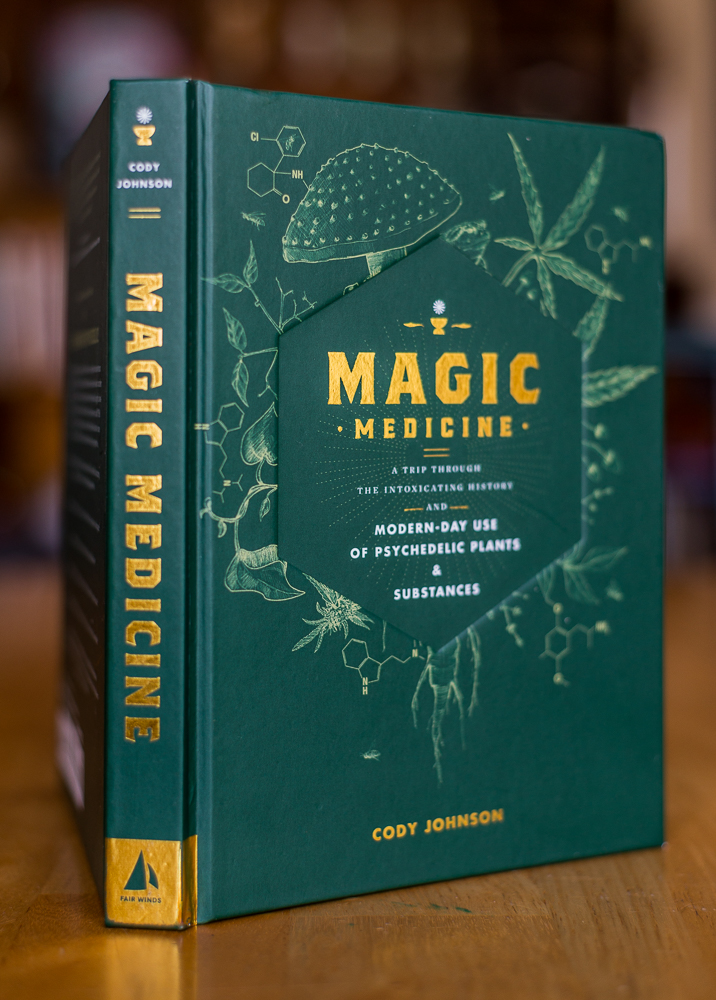Psychedelic Frontier gladly welcomes our first guest, Zizo! A big thanks to Zizo for today’s post about some surprising psilocybin research results.
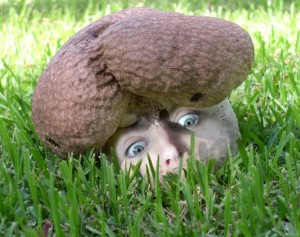
Psilocybin is the inactive precursor of psilocin, the chemical primarily responsible for the hallucinogenic effects of Psilocybe “magic mushrooms”. Though human cultures have used this entheogen for many centuries, we are only just beginning to understand the physiological mechanism by which it produces its psychedelic effects. This slow scientific progress is a result of harsh international drug policy, but I digress…
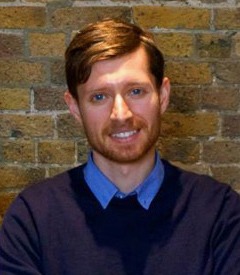
Robin Carhart-Harris, postdoctoral student at Imperial College London
The psychedelic trip is often described as profoundly mind-expanding, and the brain is popularly presumed to run in overdrive while processing so many complex and non-linear thoughts. Until recently, our understanding of psilocin’s pharmacology has supported this theory of increased brain activity. Like most psychedelics, psilocin works by binding to serotonin receptors (with particular action at the 5-HT2A subtype). These serotonin receptors are most commonly found on excitatory neurons—neurons that, when activated, increase the firing rate of adjacent neurons—so it makes sense that psychedelics would cause increases in brain activity, at least in some regions of the brain. This has been a well-accepted theory for decades and little attention has been paid to other possibilities. However, recent research headed by Robin L. Carhart-Harris from Imperial College London has called this hypothesis into question.
Carhart-Harris and his team explored the short-term effects of psilocybin by using functional MRI (fMRI) techniques to compare normal and psychedelic brain activity. The group utilized two kinds of fMRI imaging (ASL and BOLD) to evaluate which parts of the brain showed increased or decreased activity after a “moderate” dose of psilocybin (2mg administered intravenously, roughly equivalent to 15mg orally).
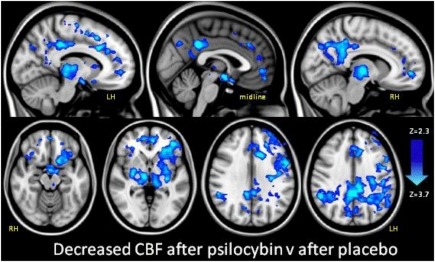
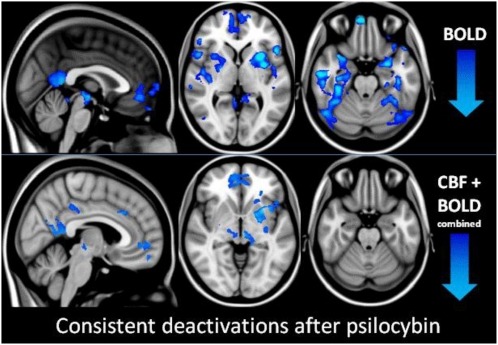
Check out the blue highlights on the images above. These indicate regions of the brain with significant decreases in arterial blood flow and blood-oxygen levels following psilocybin administration. No increases were found in any region. The group points out that these decreases were “localized to high-level association regions [such as the posterior cingulate cortex (PCC) and medial prefrontal cortex (mPFC)] and important connector hubs, such as the thalamus, PCC and anterior cingulate cortex (ACC)”. Psilocin actually suppresses neurological traffic through these hubs, perhaps forcing the brain to adapt by changing the pathway through which signals are routed. For a visual, just imagine how New York City traffic patterns would change if Grand Central Station reduced its operations temporarily due to minor construction work. Additionally, the magnitude of the psychedelic effects experienced by the subjects was correlated with the decrease in blood flow in the two critical hubs, mPFC and PCC. That is, the lower the blood flow to these vital regions, the harder you trip.

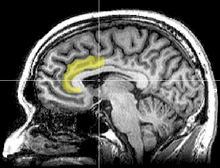
Posterior Cingulate Cortex (PCC) and Anterior Cingulate Cortex (ACC)
So, what does this mean exactly?
The regions of the brain showing reduced activated most consistently after psilocybin administration, the mPFC and PCC, are also the regions of the brain most disproportionately overactive during normal brain function. According to Carhart-Harris, “metabolism in the PCC is ~20% higher than most other brain regions, yet psilocybin decreased its blood flow by up to 20% in some subjects.” The PCC, a well-protected region supplied by a high number of blood vessels, is known to play a role in consciousness and “ego.” Additionally, the PCC is the centerpoint of the default mode network (DMN), which is known to be active during self-referencing and introspection. This default mode network hosts a high number of connections between different parts of the cortex (the outermost layer of the brain), indicating its critical role in the efficient transmission of signals throughout the entire brain.
The effects on the anterior cingulate cortex, a region implicated in empathy and emotion, are intriguing as well. Decreased blood flow in this part of the brain confounds previous research, which revealed increases in metabolic activity in the ACC following psilocybin administration (Vollenweider FX et al. 1997, Neuropsychopharmacology).
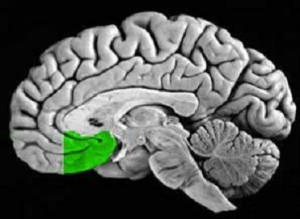
Medial Prefrontal Cortex (mPFC)
In addition to the effects on the anterior and posterior cingulate cortices, decreased activity was observed in the mPFC, a region that plays a significant role in personality expression, decision-making, and social behavior. Elevated activity in both the ACC and mPFC is associated with depression, and has been shown to recede to healthy levels when patients are successfully treated with antidepressants such as Prozac.
Psilocin’s remarkable antidepressant effects are probably related to its suppressive effect on these regions. Findings from Roland Griffiths’ group at Johns Hopkins University and others indicate that psilocin is a highly effective and long-lasting antidepressant with a mechanism of action distinct from all commercially available medicines. Even the most treatment-resistant subjects, such as those with terminal illnesses, see remarkable improvements from a single dose of psilocin. But we can explore the antidepressant effects of psychedelics another time.
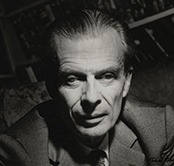
English writer Aldous Huxley
So how do these findings correspond to the vivid mind-opening and spiritually awakening effects of psychedelics? Two theories in particular stand out: Aldous Huxley’s “reducing valve” and Karl Friston’s “free energy principle.”
Huxley suggests that our “normal” consciousness represents only a small fraction of the mind’s total inputs at any particular time. He speculates that psychedelics work to open this “valve,” allowing the infiltration of thoughts that are impossible to reach in a normal state. In his landmark book about a mescaline experience, The Doors of Perception, Huxley quotes the philosopher C.D. Broad, who in turn elaborates on a theory by Henri Bergson:
“Each person is at each moment capable of remembering all that has ever happened to him and of perceiving everything that is happening everywhere in the universe. The function of the brain and nervous system is to protect us from being overwhelmed and confused by this mass of largely useless and irrelevant knowledge, by shutting out most of what we should otherwise perceive or remember at any moment, and leaving only that very small and special selection which is likely to be practically useful.”
“According to such a theory,” Huxley continues,
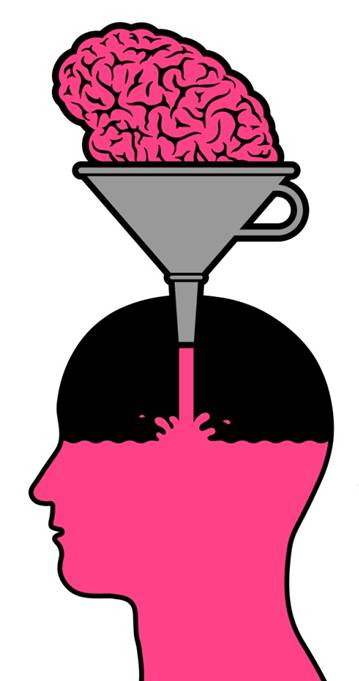
each one of us is potentially Mind at Large. But in so far as we are animals, our business is at all costs to survive. To make biological survival possible, Mind at Large has to be funneled through the reducing valve of the brain and nervous system. What comes out at the other end is a measly trickle of the kind of consciousness which will help us to stay alive on the surface of this particular planet.
From his personal experience with mescaline, Huxley extrapolates that such chemicals can open the mind up to greater reality.
[The] effects of mescalin are the sort of effects you could expect to follow the administration of a drug having the power to impair the efficiency of the cerebral reducing valve. …As Mind at Large seeps past the no longer watertight valve, all kinds of biologically useless things start to happen. In some cases there may be extra-sensory perceptions. Other persons discover a world of visionary beauty. To others again is revealed the glory, the infinite value and meaningfulness of naked existence, of the given, unconceptualized event. In the final stage of egolessness there is an “obscure knowledge” that All is in all—that All is actually each. This is as near, I take it, as a finite mind can ever come to “perceiving everything that is happening everywhere in the universe.”
Huxley sounds like a modern mystic, but perhaps he is not so far off the mark. If certain regions of the brain are responsible for funneling reality down to a digestible stream, then perhaps psychedelics, by suppressing this activity, actually open us up to greater reality—the “Mind at Large.” That’s assuming that mescaline, like psilocin, produces decreases in blood flow and blood oxygenation within the brain.

Neuroscientist Karl Friston
Karl Friston’s “free energy principle” is similar in some ways to this reducing valve theory, but takes a more technical approach. This model suggests that in order to process sensory input, the brain must work actively to minimize this incoming information using shortcuts such as learned prediction processes (such as driving to a place and having no memory of the trip). Put simply, the brain saves itself work by maintaining a probabilistic model of its environment at all times. Carhart-Harris’s study corroborates this theory, suggesting that “a lot of brain activity is actually dedicated to keeping the world very stable and ordinary and familiar and unsurprising.” In the context of psychedelics this is especially relevant, as reducing this active prediction process likely allows for a freer and broader perception of information—the “far out, man” type of consciousness often experienced while tripping.
This cutting edge research has provided us with a detailed perspective of how psychedelics elicit their mood- and mind-altering effects on the brain. By decreasing blood flow and neural activity in the regions most closely associated with self-awareness, ego, and personality expression, psilocin is able to facilitate, as Carhart-Harris so eloquently put it, “an unconstrained style of cognition.”
![]()
If you’re curious to know more about Robin Carhart-Harris and research, check out his website, psychedelicscience.org.uk. He also answered many questions in an excellent “IAmA” session on Reddit (summary of his answers here). And check out this video where Robin explains his psilocybin research.
Sources:
Carhart-Harris, RL et al. PNAS (2012); Vol. 109, No. 6. pp. 2138-2143.
Aldous Huxley (1953), The Doors of Perception.
Karl Friston et al. Journal of Physiology – Paris (2006); Vol 100, pp. 70-87.
Liked this post? Subscribe to my RSS feed to get much more!

